THE MUCH-APPROPRIATED BRYANBOY gesture – one hand at waist, hip cocked with the other hand is held high, proudly clutching a designer handbag – has become a powerful symbol in the digital era. The blogger Bryan Yambao, popularly known as Bryanboy, ‘coined’ the pose on the pages of his popular blog bryanboy.com. This gesture, and other similar poses of Bryanboy’s blogging contemporaries, has become clearly identifiable in contemporary image culture, widely replicated with playful aspiration. More broadly speaking, the ‘blogger pose’, as it has come to be known in the digital landscape, has given the everyday fashion follower the opportunity to adopt a centre-of-attention status in a culture of fashion commerce.
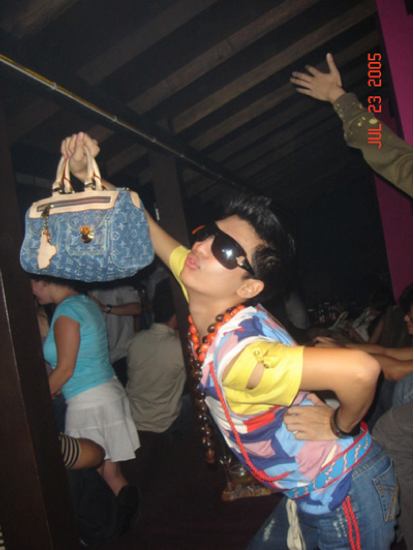
Bryanboy is a pin-up boy for the fashion blogger: hailing from Manila, the capital of The Philippines, the 27-year-old has become an ostentatious mainstay of the fashion weeks, appearing on the front row among a cohort which includes Susie Bubble, Scott Schuman, Tavi Gevinson, Garance Doré and Tommy Ton, all of whom are now almost veterans of the blogosphere. Each of these figurehead bloggers have their signature and highly-cultivated appearance, taste and language that has garnered their loyal followers. Bryanboy presents a character of luxury leisure and fashion consumption typical of bloggers, but his standout characteristic is the ‘Bryanboy pose’, which he enacts enthusiastically with the latest season bags he features on his blog. The pose consists of one arm outstretched, with the other hand on hip, as if to say: ‘look what I’ve got!’ in a clear gesture of branding. In 2008, in honour of the pose and the blogger, and in an act of pop-cultural homage typical of the designer, Marc Jacobs named a style of bag after Bryanboy: the ‘BB ostrich’ bag, for his autumn/winter 2008 collection.1 This reflected Bryanboy’s status as an enduring figure of the blogosphere, and cemented the pose as an iconic image on the digital landscape.
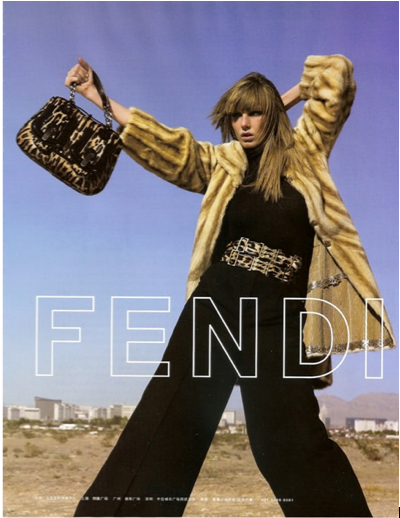
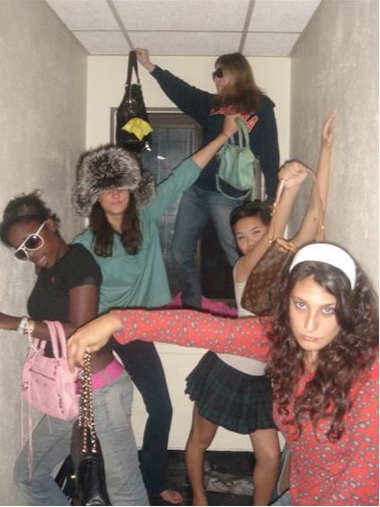
Before Jacobs’ eponymous ‘BB ostrich’ bag, the Bryanboy pose emerged from a playful internet narrative to something more commercially complex when in 2006 the luxury brand Fendi appeared to appropriate the pose for their spring/summer advertising campaign. The images featured model Angela Lindvall in a position that was strikingly familiar to the Bryanboy pose. Bryanboy fans immediately adopted the gesture and an array of amateur copies ensued; these were gladly received and promoted by the blogger. In a response post to the Fendi campaign Bryanboy wrote ‘NOTHING CAN BEAT THE ORIGINAL, THE LEGENDARY AND THE INFAMOUS BRYANBOY POSE.’ Which he followed up with: ‘I LOOOOOVE FENDI!!!!!!!’2 Since this outburst, many of the blogger’s posts on the subject, as well as images of Bryanboy himself in the pose, have mysteriously been removed from the blog. Whether or not Fendi did actively appropriate the blogger, the interaction sheds light on an interesting dynamic between the popularity of the ‘blogger pose’ with fashion followers and broader issues of cultural appropriation.
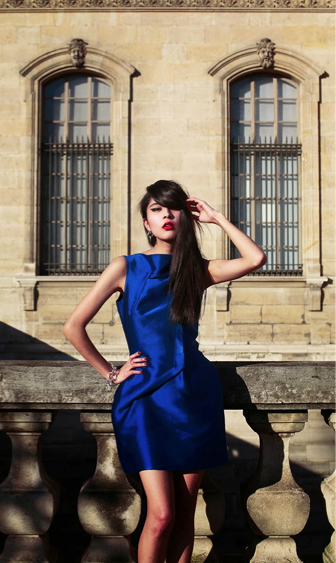
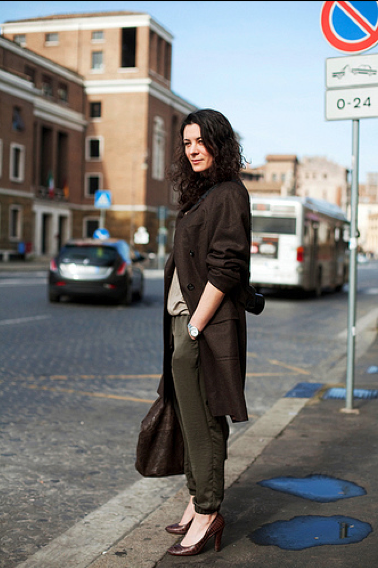

A quick Google search of the term ‘blogger pose’ will inevitably raise any number of demonstrations on mastering the art of posing for street-style photographers for the blog context. There are how-to Youtube tutorials and step-by-step guides that instruct a model on how to get the right nonchalant stance of the street-style blogger. In a top ten list of these poses, blogger Cocorosa lists some of the popular figures and their signature poses.3 For instance, there’s chicmuse (Denni Elias) with her side-swept hair and hand-on-hip pose, or the pigeon-toed, direct stance popular on Scott Schuman’s The Sartorialist, among numerous others. These aesthetics, borne out of the blogging and street-style landscape, have become a clearly recognisable cultural phenomenon. But, as fashion academic and writer Minh-Ha T. Pham contends, the Bryanboy pose represents something more complex than the cliché vanity of fashion bloggers; it reflects an inversion of cultural appropriation. Pham argues that ‘fashion blogs have created a global platform on which Asian bodies and labours are incredibly visible and also commanding’ and that ‘Fendi’s dodgy corporate practices render invisible Yambao’s racially and sexually minoritised body…In effect ‘whitening’ the Bryanboy pose.’4
A defining phenomenon of the digital landscape and the cohort of celebrity bloggers, is the ‘blogger pose’. Personified by leading figures of this industry, such as Scott Schuman, Denni Elias and Garance Doré, the culture of posing has been which has been widely adopted and adapted by the mainstream. The case of the Bryanboy pose, as Minha-Ha T. Pham argues, presents a deeper, more culturally complex interaction between blogger and brand, raising issues of cultural appropriation in fashion commerce. Although the intentions behind the Fendi advertisement remain uncertain, perhaps the cultural repercussions aren’t as severe as Pham might suggest, but certainly the incident sheds light on the ever-evolving dynamic exchange between blogger, brand and follower.
Laura Gardner is the former Online Editor for Vestoj and a writer in Melbourne.